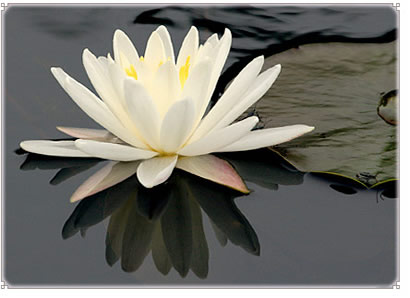If you saw the announcements for the 108 sun salutations event that happened in Ithaca this past weekend, you may wonder what’s so special about the number 108. Or, if you use a mala, or set of mantra counting beads, there are generally 108 beads (or some fraction of that number). Why are there 108 beads on a mala?
If you really delve deeply into the answer, it can make your head spin, as some of the explanations are quite complex. I offer below just a few of the associations with the number 108, both from the yoga tradition and from other spiritual teachings as well.
Note: I can’t vouch for the accuracy of all the statements below, as it would have taken hours of research. These have been gathered from a variety of sources, on the web and from written materials. Some of these tidbits of information may be useful to you, while some of it might seem like myth or superstition. I invite you to see what resonates with you, taking what you like and leaving the rest.
9 times 12: Both of these numbers have been said to have spiritual significance in many traditions. 9 times 12 is 108. Also, 1 plus 8 equals 9. That 9 times 12 equals 108.
Powers of 1, 2, and 3 in math: 1 to 1st power=1; 2 to 2nd power=4 (2x2); 3 to 3rd power=27 (3x3x3). 1x4x27=108
Harshad number: 108 is a Harshad number, which is an integer divisible by the sum of its digits (Harshad is from Sanskrit, and means "great joy")
Desires: There are said to be 108 earthly desires in mortals.
Lies: There are said to be 108 lies that humans tell.
Delusions: There are said to be 108 human delusions or forms of ignorance.
Heart Chakra: The chakras are the intersections of energy lines, and there are said to be a total of 108 energy lines converging to form the heart chakra.
Marmas: Marmas or marmasthanas are like energy intersections called chakras, except have fewer energy lines converging to form them. There are said to be 108 marmas in the subtle body.
Sanskrit alphabet: There are 54 letters in the Sanskrit alphabet. Each has masculine and feminine, shiva and shakti. 54 times 2 is 108.
Pranayama: If one is able to be so calm in meditation as to have only 108 breaths in a day, enlightenment will come.
Upanishads: Some say there are 108 Upanishads, the vedic texts of the ancient India.
Sri Yantra: On the Sri Yantra (a sacred geometric figure) there are marmas where three lines intersect, and there are 54 such intersections. Each intersections has masculine and feminine, shiva and shakti qualities. 54 times 2 equals 108. Thus, there are 108 points that define the Sri Yantra as well as the human body.
Pentagon: The angle formed by two adjacent lines in a pentagon equals 108 degrees.
Time: Some say there are 108 feelings, with 36 related to the past, 36 related to the present, and 36 related to the future.
8 extra beads: In doing a practice of counting the number of repetitions of the mala, 100 are counted as completed. The remaining are said to cover errors or omissions. The 8 are also said to be an offering to God and Guru.
Astrology: There are 12 constellations, and 9 arc segments called namshas or chandrakalas. 9 times 12 equals 108. Chandra is moon, and kalas are the divisions within a whole.
River Ganga: The sacred River Ganga spans a longitude of 12 degrees (79 to 91), and a latitude of 9 degrees (22 to 31). 12 times 9 equals 108.
Planets and Houses: In astrology, there are 12 houses and 9 planets. 12 times 9 equals 108.
Goddess names: There are said to be 108 Indian goddess names.
Gopis of Krishna: In the Krishna tradition, there were said to be 108 gopis or maid servants of Krishna.
1, 0, and 8: Some say that 1 stands for God or higher Truth, 0 stands for emptiness or completeness in spiritual practice, and 8 stands for infinity or eternity.
Sun and Earth: The diameter of the Sun is 108 times the diameter of the Earth. The distance from the Sun to the Earth is 108 times the diameter of the Sun.
Moon and Earth: The average distance of the Moon from the Earth is 108 times the diameter of the Moon.
Silver and the moon: In astrology, the metal silver is said to represent the moon. The atomic weight of silver is 108.
Numerical scale: The 1 of 108, and the 8 of 108, when added together equals 9, which is the number of the numerical scale, i.e. 1, 2, 3 ... 10, etc., where 0 is not a number.
Meditations: Some say there are 108 styles of meditation.
Breath: Tantra estimates the average number of breaths per day at 21,600, of which 10,800 are solar energy, and 10,800 are lunar energy. Multiplying 108 by 100 is 10,800. Multiplying 2 x 10,800 equals 21,600.
Paths to God: Some suggest that there are 108 paths to God.
Smaller divisions: The number 108 is divided, such as in half, third, quarter, or twelfth, so that some malas have 54, 36, 27, or 9 beads.
Hinduism: 108 is said to refer to the number of Hindu deities. Some say that each of the deities has 108 names.
Islam: The number 108 is used in Islam to refer to God.
Jain: In the Jain religion, 108 are the combined virtues of five categories of holy ones, including 12, 8, 36, 25, and 27 virtues respectively.
Sikh: The Sikh tradition has a mala of 108 knots tied in a string of wool, rather than beads.
Buddhism: Some Buddhists carve 108 small Buddhas on a walnut for good luck. Some ring a bell 108 times to celebrate a new year. There are said to be 108 virtues to cultivate and 108 defilements to avoid.
Chinese: The Chinese Buddhists and Taoists use a 108 bead mala, which is called su-chu, and has three dividing beads, so the mala is divided into three parts of 36 each. Chinese astrology says that there are 108 sacred stars.
Stages of the soul: Said that Atman, the human soul or center goes through 108 stages on the journey.
Dance: There are 108 forms of dance in the Indian traditions.
Praiseworthy souls: There are 108 qualities of praiseworthy souls.
First man in space: The first manned space flight lasted 108 minutes, and was on April 12, 1961 by Yuri Gagarin, a Soviet cosmonaut.
Names for Shiva: 108 is the number of names for Shiva (an important Hindu god)
Names for Buddha: 108 is the number of names for Buddha
Man: 108 is the Chinese number representing "man"
Tibetan Mala: 108 is the number of beads on a Tibetan "mala"
Judaism: 108 is six times the number "18", which is a Jewish good luck number
Sun Salutations: 108 is twelve times the number 9, which is the number of vinyasas (movements linked to breath) in a Sun Salutation.
Tantra: According to the Tantric heritage, there are 108 pilgrimage centers (pîtha) that are dedicated to the feminine (lunar) principle, or Shakti.
And, if I haven’t lost you by now, and you really like numbers, here’s more:
The number 108 is connected with 18, which, in Hindu symbolism, is said to represent completeness or wholeness. This number is prominent in the Mahâbhârata epic, which consists of 18 books, just as the Bhagavad-Gîtâ (embedded in the epic) consists of 18 chapters. The Bharata war was waged for 18 days, and the armies (akshauhinî) on the opposing sides numbered 18 as well. An akshauhinî consists of 21,870 chariots, 21,870 elephants, 65,610 horses, and 109,350 footsoldiers, which makes a total of 218,700 units. The total of the digits of each number adds up to 18! The epic has many more instances of this kind relating to the number 18, and it is also found in other Indian works. The Mahâbhârata (12.267.28) itself provides a key to this symbolic number as follows:
The connection between 18 and 108 can be found also in an important microcosmic cycle, namely the 21,600 daily breaths we take. According to Tantra, 10,800 breaths are lunar, 10,800 breaths are solar. They alternate in us in the form of the alternating nasal cycle, which medicine has confirmed, so that the body has its microcosmic reflection of the macrocosmic eclipses. The microcosmic/macrocosmic parallelism was of the utmost significance to the Indian sages. They saw it as demonstrating the flawless harmony (rita) at work in the cosmos.
Now, 21,600 = 18 x 1200 or 108 x 200. 21,600 yields other important numerical derivations:
21,600 : 60 = 360 (the ideal Vedic year)
21,600 : 800 = 27 (number of lunar houses in Vedic astrology)
21,600 : 108 = 200 (number of arcseconds defining a navâmsha in Vedic astrology)
Looking at a larger cosmic cycle—the yugas (or world ages)—we find that each is calculated as multiples of 21,600.
krita-yuga —1,728,000 solar years = 21,600 x 80
tretâ-yuga —1,296,000 solar years = 21,600 x 60
dvâpara-yuga —864,000 solar years = 21,600 x 40
kali-yuga — 432,000 solar years = 21,600 x 20
The sum total of these four world ages makes:
kalpa — 4,320,000 solar years = 21,600 x 200 or 108 x 40,000 or 18 x 240,000
Thus the number 18 is fundamental to Indian psychocosmology.
So, dear yogis, that should give you plenty to digest. If it's not already part of your practice, you may want to explore reciting a mantra or prayer 108 times daily with a mala. Or, you may want to try 108 repetitions of a particular pranayama (breath control technique) and see what you notice. May you enjoy your own inquiry into the power of 108!
.















